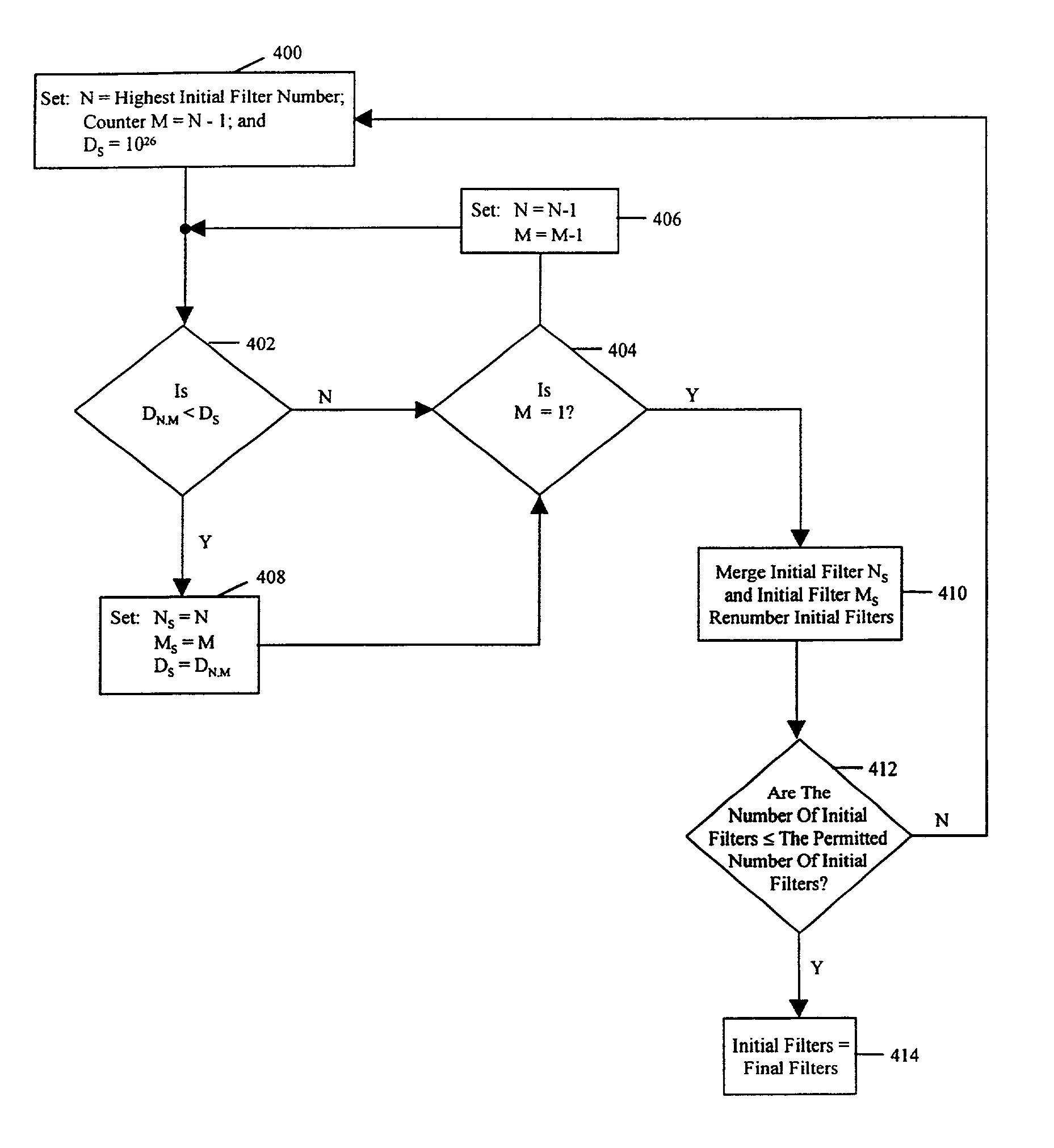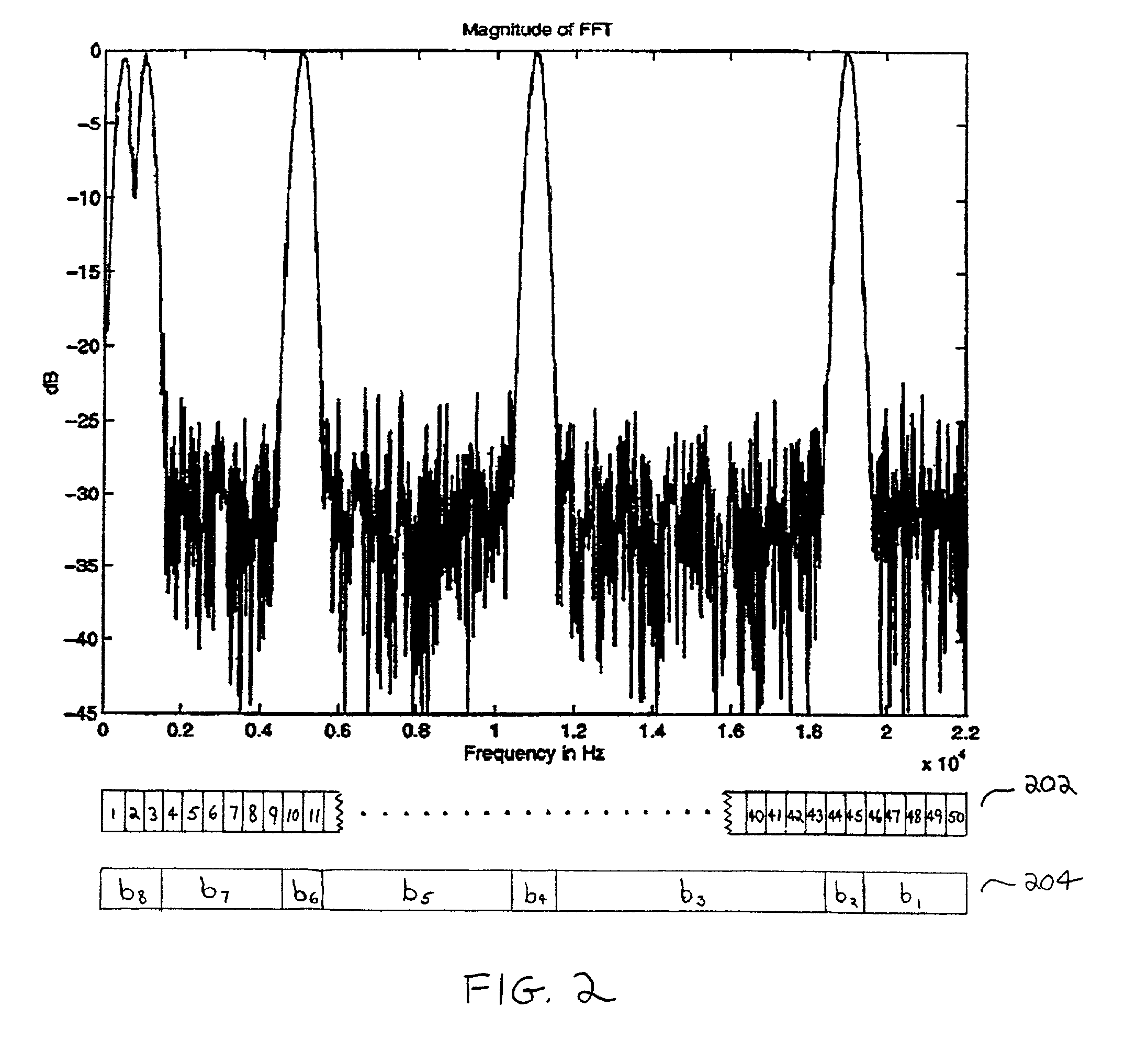Effective deployment of temporal noise shaping (TNS) filters
- Summary
- Abstract
- Description
- Claims
- Application Information
AI Technical Summary
Benefits of technology
Problems solved by technology
Method used
Image
Examples
Embodiment Construction
[0023]Referring now to the drawings, as previously discussed, FIGS. 1A–1C illustrate an audio signal, a noise signal, and a superposition of these two signals within a block, respectively. The frequency spectra of each signal is illustrated in FIGS. 1D–1F. From FIG. 1F, it can be seen that the signal shown in FIG. 1A is audible in the set of frequency bands including b2, b4, b6 and b8. In contrast, the signal shown in FIG. 1B is audible in bands covering b1, b3, b5 and b7. In order for the entire spectra of the block to be covered by TNS filters, the current method of TNS filter deployment would require eight filters—one for each of the frequency bands 1 through 8, which, as discussed above, is not permitted by the current AAC standard.
[0024]FIG. 2 is essentially FIG. 1F enlarged to illustrate how the boundaries of frequency bands such as b1 through b8 are defined in accordance with one aspect of the present invention. As indicated by reference numeral 202, the frequency range of th...
PUM
 Login to View More
Login to View More Abstract
Description
Claims
Application Information
 Login to View More
Login to View More - R&D
- Intellectual Property
- Life Sciences
- Materials
- Tech Scout
- Unparalleled Data Quality
- Higher Quality Content
- 60% Fewer Hallucinations
Browse by: Latest US Patents, China's latest patents, Technical Efficacy Thesaurus, Application Domain, Technology Topic, Popular Technical Reports.
© 2025 PatSnap. All rights reserved.Legal|Privacy policy|Modern Slavery Act Transparency Statement|Sitemap|About US| Contact US: help@patsnap.com



